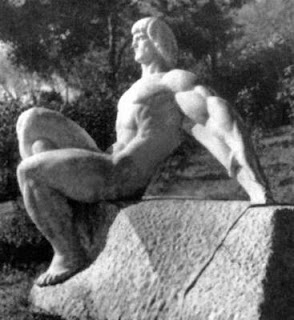The Șugău Cave is located n the Giurgeului Mountain, 1568 metres above sea level, on Șugău Creek, flowing out from the cave. The creek is fed by the karst water gathered in the mountain. One can come close to the cave from the Voșlăbeni village, on the road Gheorgheni - Miercurea Ciuc.
Vizualizare hartă mărită
The Șugău cave was formed 65 million years ago, in the Paleocene Period, as a result of folding movements. The spatial position of the cave system is characterized by tectonic pre-formation. The multi-level passage of the cave was formed along the lithoclasses and faults of the dolomite, granular limestone, in mezo-metamorphic crystalline shale sequence of the Rebra series. The granular limestone, along which the passage was formed, requires an exact, specialized identification, as at the mouth of the creek there is no more limestone, its place was taken by crystalline shale up to the summit.
The cave is divided into 4 large galleries: dry passages 1 and 2, which were formerly seepage, the "Túlfolyó-brach", and aqueous passage, active even nowadays. The dry passage 1 is supplied with iron door, it can be visited, but it needs renovation. The first hall is the "Dressing room", it is a recess similar to a domed cellar. Here shifted their clothes the speleologists in the period before the hospice was built. The next hall is the "Conference Room", which in 1965 carrying out alluvial deposits made way for itself in the direction of the larger halls. In this hall can be seen drip-stones. On the ceiling of the hall can be seen the snow-white, mild drip-stone deposit, called lublinite (mountain milk, rock milk). Some metres further from there can be found cauldron like forms: "The Giant Owl Eye" and "The Mother-in-Law's Mouth". On the right inwards can be seen "The Fairyland Passage"; for its walls are characteristic the stalactites. The "Bastion" is the largest stalagmite of the cave; next to it is the "Mouth of the Wolf". In the stalagmite encrustation can be found the "Altar" and the "Pagoda". The stalagmites of the Șugău cave are postgenomic, that is to say they developed after the formation of the cave recess. Its base material is calcite and aragonite.
There can be found also halls and formations such as the "Whirlpool Hall", the "Connecting Passage", "Miklós Hall", the "Triumphal Arch" and the "Bat Boneyard", the "Petrified Waterfall", the "Stalactite Cemetery", the "Concert Hall". The largest hall of the cave is the "Large Hall". A sharp descent leads in the direction of its base, from there starts a low passage towards the lower levels. In the lower part of its wall calcite crystallines can be found. Downwards from this hall we find the "Crystalline chimney", which walls are covered with crystalline.
The most mysterious and the most studied passage of the cave is the "Aqueous Section". This active passage is the most difficult passable section of the cave. The average water output of the creek, which flow over the cave, is 30 l/sec. The water temperature, in comparison with other cave creeks, is very low 5-7 centigrade degrees. Leaving the mouth, one can follow the creek along 40 m inwards. On the right there are very dangerous and slippy avens. This passage is a large tectonical faultage, which walls moved away from each other, forming a joint. It is worth mentioning the "Lamp Cemetery", which is a vertical shaft, and it is the most important part of the joint. An interesting formation of the lublinite precipitate is the "Stalactite Sources".
The excavated soil and debris during the exploration aggraded the creek, so only in one passage can be followed its flow. Our pass on is obstructed by a water trap. The other by-pass passage is also blocked by water. On the left, before the water trap a stalactite flow hangs on the wall.
The atmosphere is rich in carbon dioxide. Due to the low temperature inside, the humidity level of the Șugău cave is 95%. The cave water contains a large amount of calcium carbonate. Despite the hostile conditions the cave has a small fauna, which consists of the Froglobion-family: springtails (Collembola), insects (Insecta).
The cave's only inhabitant are some species of bat: Myottis Natererri, which shoes up especially in winter time, single or in a group, settle down on the dry walls or on the ceiling of the cave; Greater mouse-eared bat (Myotis Myotis), Lesser mouse-eared bat (Myotis Blythi), Brown long-eared bat (Plecotus Auritus), Long fingered bat (Miniorterus schreibersi).
Adapted from here.
Noua Cortină de Fier
5 days ago




















































